Aftermarket insoles are a magical and transformative experience.
When I get new shoes or boots I immediately remove the floppy non-functional manufacturer’s insoles and replace them with high-quality protective and supportive insoles.
If you experience plantar fasciitis, or sore, bruised, tired feet after your hikes you need to get some insoles.
Once you try real insoles you will want them in every shoe you own!
I put aftermarket insoles in all of my around-town shoes, trail runners, hiking shoes, winter hiking boots, and ski boots. They are worth every penny.
Shockingly, insoles are overlooked by most hikers. They are critical to long-term comfort and foot protection.
Hiking insoles deliver ultra high-value for a low annual cost. The best insoles for hiking will last six months to over a year depending how often you hike or run.
Save $20 on your first order of Sole insoles.
Upgrade your insoles today for super happy and healthy feet.
After successive foot injuries and a few bouts of plantar fasciitis, I invested in aftermarket insoles. They enabled my feet to heal, repair, and protect themselves from future injury.
Who should get insoles for their hiking boots or shoes?
Everyone should!
Few “out of the hiking shoe-box” insoles benefit your feet. Pull them out, examine them, and you will realize this is the absolute truth. They are really nothing more than a liner.
Add comfort now, reduce your risk of injury (heel pain, underfoot bruising, blisters), and get some insoles for your hiking shoes or boots.
If you are a regular hiker, invest in your feet. Keep them happy and healthy.
Common reasons to get hiking insoles
If you experience any problems below, consider getting aftermarket insoles for your hiking shoes, hiking boots, or trail runners.
- Plantar fasciitis
- Knee or back pain
- Joint or foot pain
- Shin splints
- Supination (foot rolling out)
- Over-pronation (foot rolling inwards)
- Foot or heel slipping
- Hot spots or pressure points
- Maintain general foot health to prevent injury
Benefits of after-market insoles
Insoles are going to provide additional support and cushioning for your feet. Thus, more comfort.
This is what you can expect from an upgrade.
- Minimize fatigue
- Less shifting and rubbing (reduces the chance of blisters or hot spots)
- Shock absorption
- Moisture-wicking
- Support and stability
- Prevents heel slip
- Bacterial growth reduction
Our top picks: The best insoles for hiking and backpacking
We looked in-depth at what is available at REI and other online stores.
The three leading brands you will find are Superfeet, Oboz, and Sole.
In our opinion, the Oboz offering isn’t a worthy option. Although significantly cheaper at about half the price, the quality doesn’t appear much better than the stock insoles in hiking shoes or boots. They seem just as floppy and flimsy, so we do not recommend them to our readers.
1) SOLE Performance Medium Insoles (Best Overall)
These insoles are the best option for most hikers.
They are an exciting option because they are primarily made of recycled wine corks. Cork is a natural material that has some very positive benefits and qualities.
I use the Sole Performance Medium Insoles in my Salomon X Ultra 4 hiking shoes. They are a great choice for most hikers.
After I developed plantar fasciitis wearing these insoles regularly helped cure the problem within two weeks.
Natural cork qualities
- Eco-friendly, 100% natural
- Cork provides natural cushioning and shock absorption
- Naturally dry material for powerful moisture-wicking and odor-reduction
- Cork is supportive and does not compress over time
Key features
- 1.6 mm of cushioning delivers fantastic underfoot comfort and support
- Insoles are heat-moldable (in a conventional oven) or wear-moldable and create a customized fit
- Polyester moisture-wicking Polygiene antimicrobial top sheet
- A deep heel cup prevents slipping and lateral movement
- Modable cork base adapts to your foot
- Promotes equal pressure distribution in the footbed
Save $20 on your first order of Sole insoles.
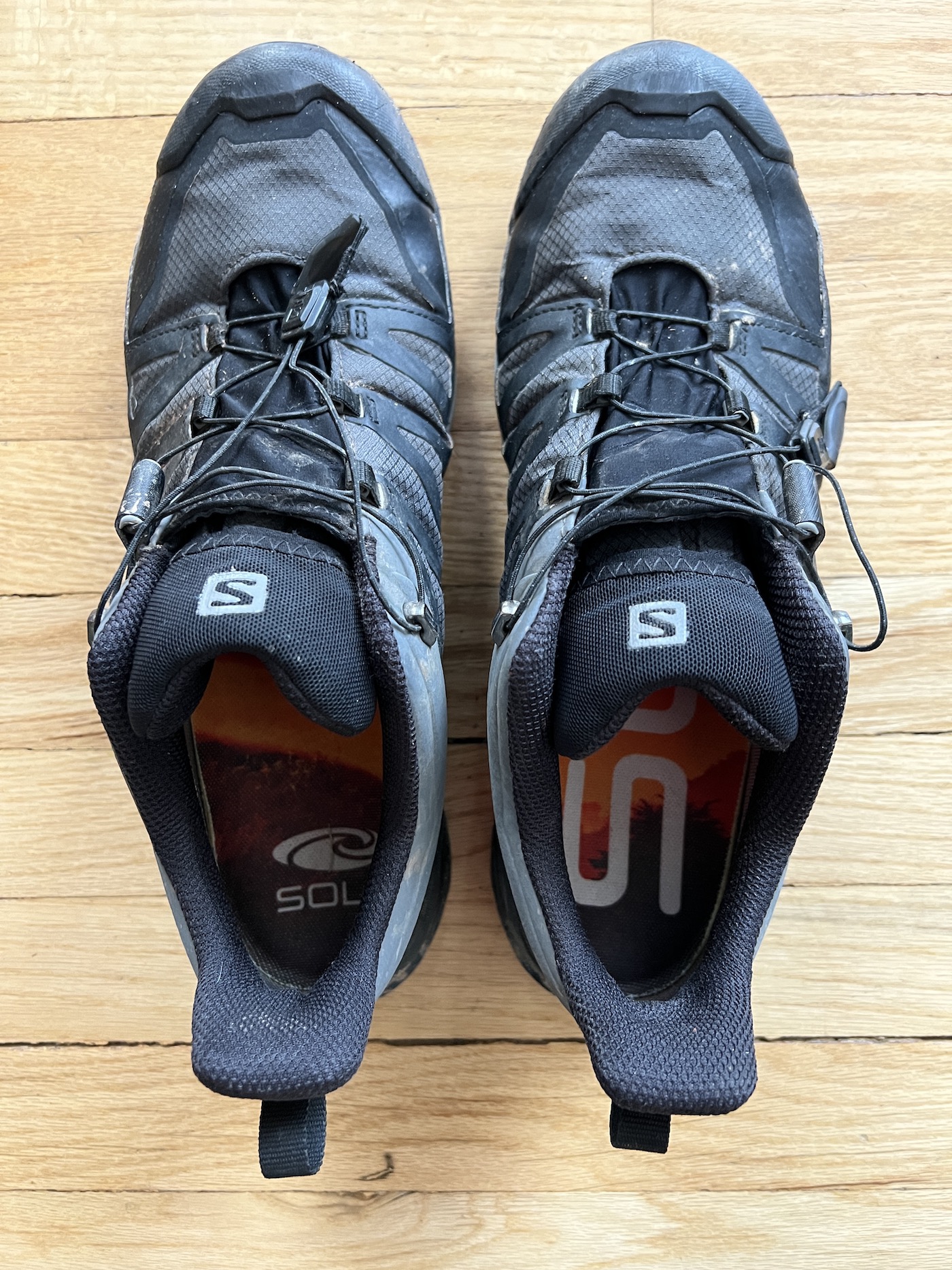
If you want a bit more cushion under your feet then check out the Sole Performance Thick insoles. I use them in my winter hiking boots.
To maintain support and prevent heel slippage, I use the Thermal Thick with Wool insoles in my ski boots.
You can also get Sole Performance insoles with metatarsal pads. These insoles provide extra relief to your feet by supporting the toe bones with metatarsal pads. I have tested them in my Salomon X Ultra 4 hiking shoes. Get these for added support in the forefoot.
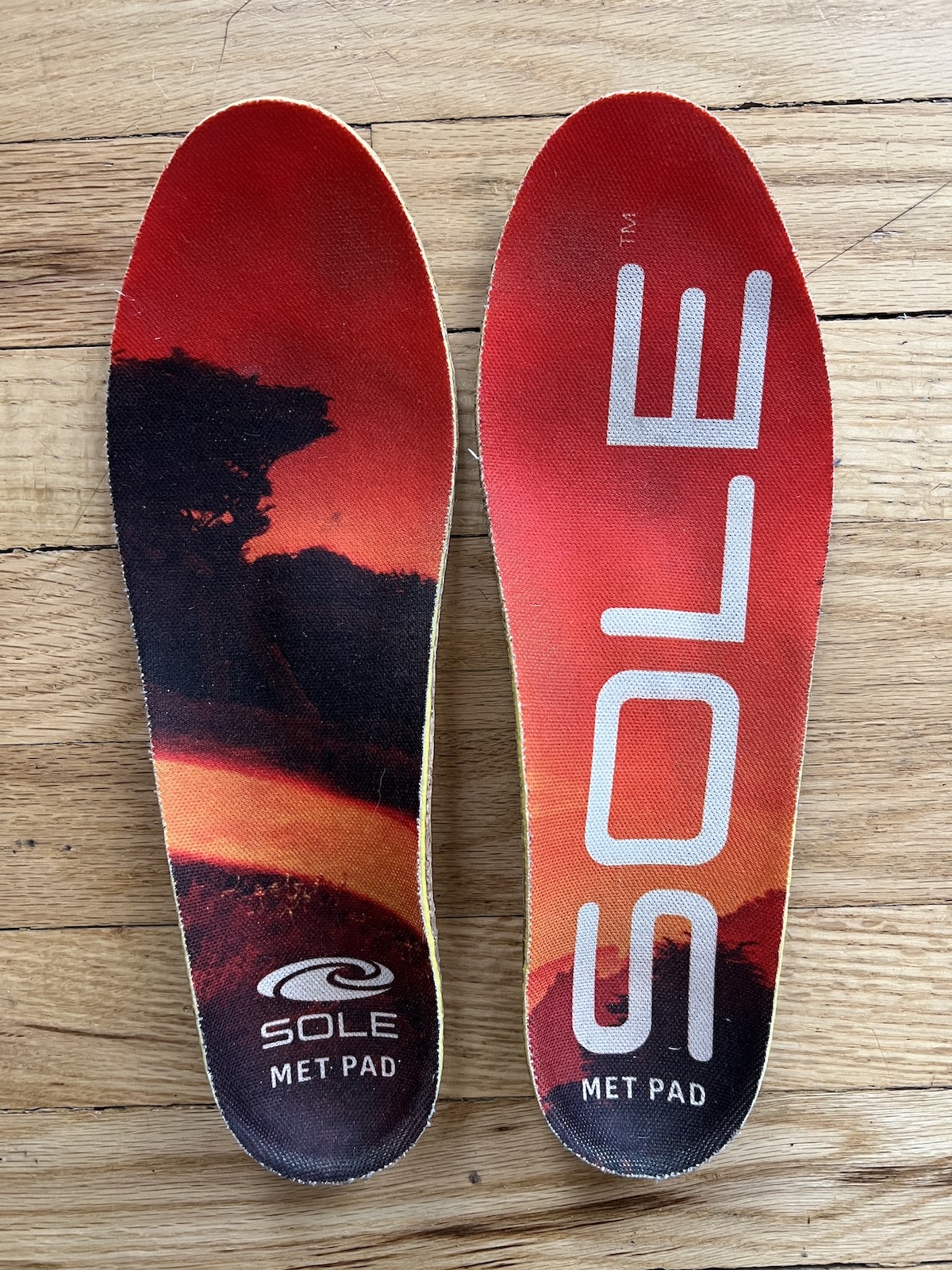
If you are hiking in trail runners with a smaller toe box height, try the Sole Performance Thin insoles. Another great option for shoes that have a snug fit are the Active Thin insoles by Sole. They provide great arch support but are more forgiving and thinner in the forefoot.
I currently use the Performance Thin insoles in my Brooks Catamount and Brooks Cascadia 16 trail running shoes. They work perfectly with trail runners that often have a snug toe box.

Brooks Cascadia 16 trail running shoes with SOLE Performance Thin insoles.
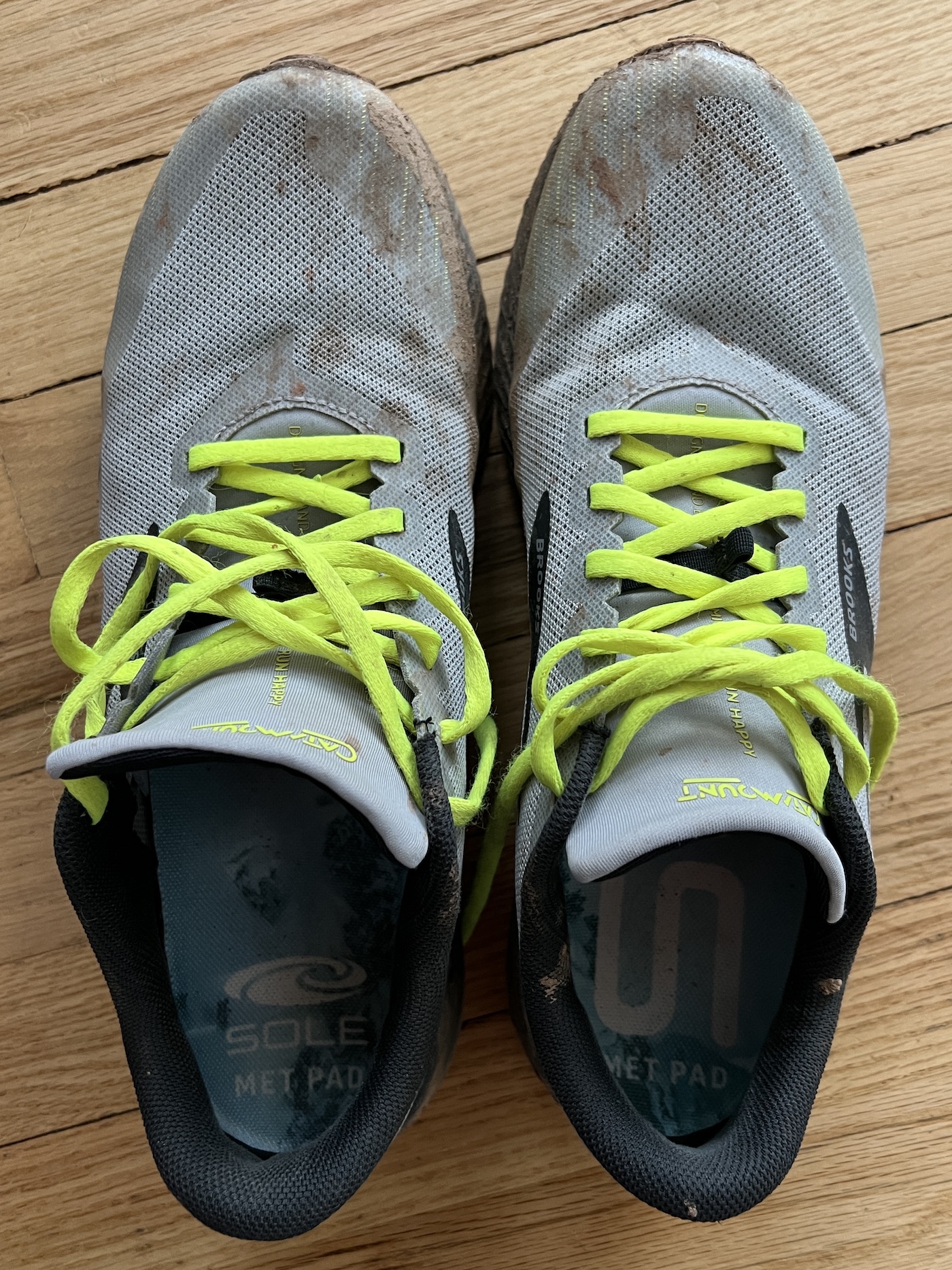
Why I like SOLE insoles
These insoles are very light and supportive. I love how they push up into my feet. This helps prevent injury and helps to conserve energy in my feet on long hikes. They lock my feet into the heels of my hiking shoes. The Sole insoles have better forefoot support compared to other insoles that I have tested. I also like that they are made from recycled cork and not plastic. SOLE insoles are durable. They last as long as any of my shoes if not longer.
Pros
- Supportive and conserve foot energy
- Help to prevent underfoot injury
- Healed my plantar fasciitis
- Made of recycled materials
- Durable (last longer than most of my shoes)
Cons
- Slightly more expensive (but last longer)
2) Superfeet Trailblazer Comfort Hiking Insoles
This is the first after-market hiking insole I purchased and tested in my new Vasque Breeze AT Low GTX Hiking Shoes. Although I love these durable hiking shoes, I found my feet were slipping a bit when hiking with the original stock insoles. Just a bit too roomy in the heel area. I was also experiencing minor shin splints from steep rocky descents.
The quality, materials, and sturdiness of the Superfeet Trailblazer Comfort hiking insoles looked better than most. There is a good chance these insoles will outlast your shoes.
Key features
- Deep heel cup to prevent slipping
- Heel impact technology pod disperses impact on rough terrain
- Aerospring Ascent dual-comfort foam absorbs shock, increases comfort, reduces fatigue
- EVOLyte carbon fiber stabilizer caps increase support and stability
- Moisture wicking helps to reduce bacterial growth and odors
- Work for 12 months or 500 miles
After inserting my brand new Superfeet Trailblazers, the improved fit and feeling were noticeable immediately. You can feel the additional support under the foot. It is incredible what better materials and a few extra millimeters of thickness can accomplish. They easily enable me to hike several hours further per outing.
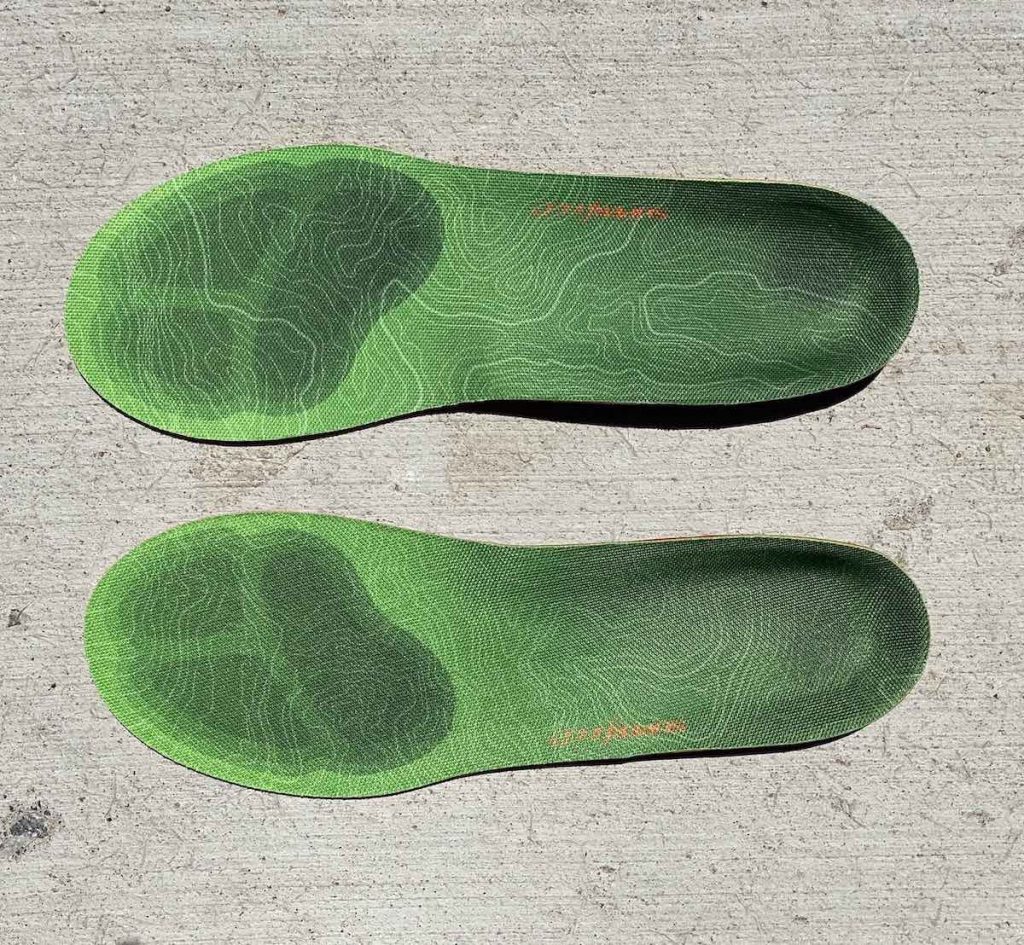
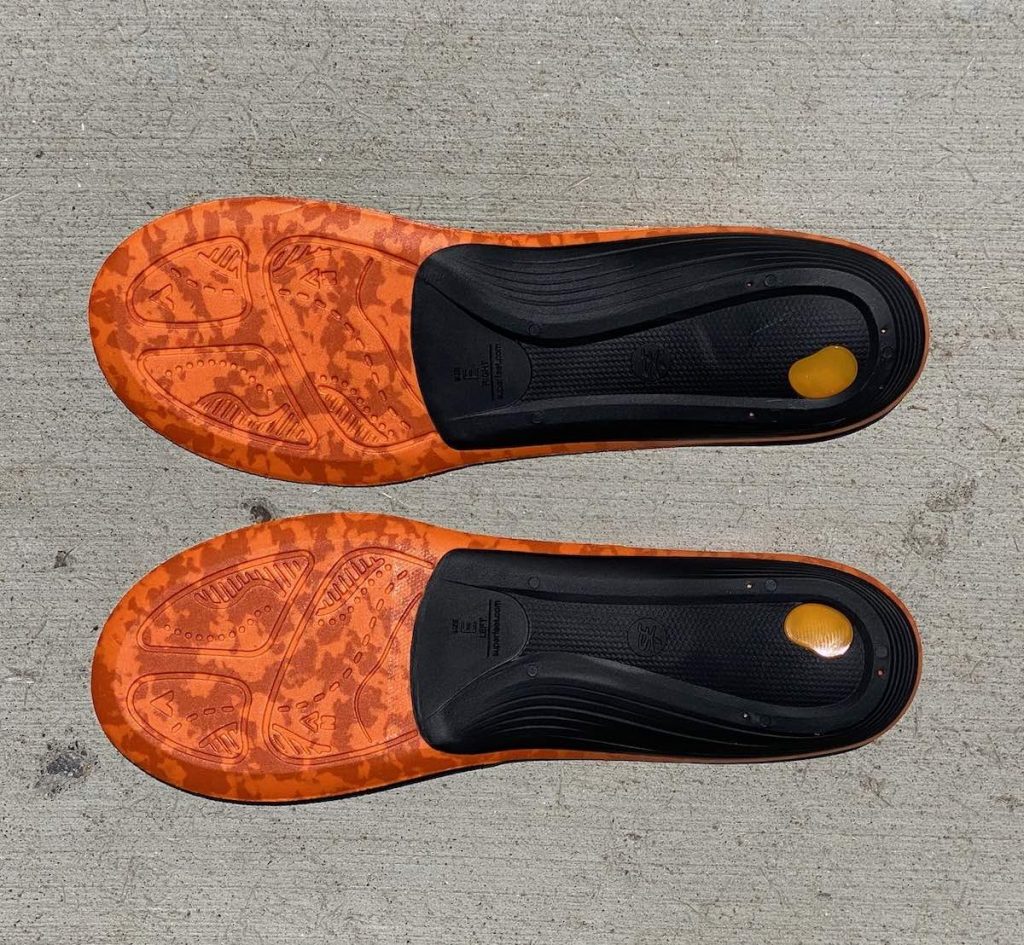
Why we like these insoles: The black section in the above photo is made of stiff plastic. These are a good pick if you want extra-firm support in your arch.
Best insoles for plantar fasciitis
Plantar fasciitis is no fun. The bottom foot pain is nagging and persistent. I suffered from plantar fasciitis for 12 months before I purchased performance insoles.
From my experience, the key to recovery has been icing regularly and wearing proper footwear. I threw all my older shoes in the trash and purchased four new pairs of shoes, and inserted fresh SOLE insoles in each. The supportive and firm cushioned midsoles in my newest trail runners sped up my recovery.
You can increase foot support and cushion with aftermarket insoles. Supportive cushioning (not super firm or hard) in the heel delivers the best results.
The SOLE Performance Medium Insoles are fantastic and cured my feet of plantar fasciitis. I love the cork support of these insoles. Therefore, they are the best insoles for plantar fasciitis if you ask me.
Hiking insole care tips
These aftermarket insoles for hiking generally last about 6-12 months, depending on how often you hike.
However, if you care for them, you can extend their lifespan.
Here is what you can do.
- Air them out to dry after hikes if you have sweaty feet
- Remove and shake out debris
- Wash them every couple of months by hand using a mild detergent
- Inspect for any damage
I can’t stress how great aftermarket insoles are for your feet. Save $20 on your first order of Sole insoles. You will not regret making this purchase!